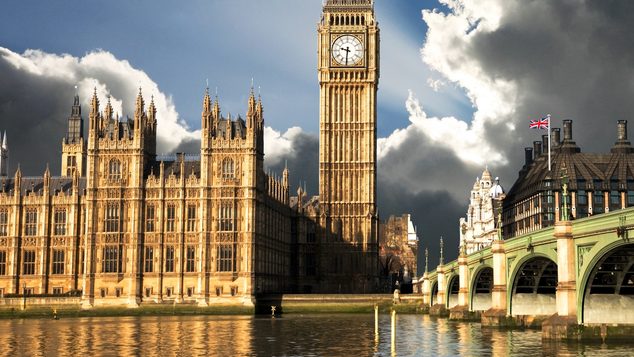In our newly published paper, ‘A Perspective on Returns’, the Real Return team discusses the probability that the boom we have seen in financial markets will end in a similar fashion to those experienced in the last twenty years.
In a short series of posts we discuss some of the key ideas in the paper. Our second blog looks at the arguments against the current cycle merely being a rerun of the previous cycle, and explains why we believe those arguments are likely to be incorrect.
As we discussed in our previous post, we believe that the current economic climate has notable underlying instabilities, which could have serious fiscal consequences in the future. However, some believe that this analysis is incorrect and that a number of factors have led to a more stable global economy, making it far less likely that we are merely repeating past errors and potentially heading for another crash. Here we examine these arguments and explain we believe they are flawed.
A Safer Banking System?
One popular argument supporting a benign view is that post-crisis regulation has made the banking system safer. We believe one needs to remember, however, that many central bankers could not fully comprehend the mechanics of the last major crisis and denied that it was even happening (as suggested by their models) even after it had begun. What is clear to us is that banks have indeed now been forced by regulation to take much less risk and carry higher capital buffers, such that they are not the likely source of the next downturn. What we also see as clear is that leverage has, in aggregate, continued to grow at a pace, and this has been mediated by the financial markets (through non-bank lending and shadow banking activity). Furthermore, we note that the financial ‘innovations’ in this cycle have been largely seen in asset management (complex strategies, exchange-traded funds, etc.).
Whereas the problems of the last cycle related to bank liquidity and solvency, we believe that risks in this cycle are likely to have been transferred to the stock and credit markets, and ultimately to unsuspecting investors (via the use of capital markets in place of banks).
Not Enough Euphoria
Another proposed argument supporting the idea that this cycle is different from the last is the decreased euphoria surrounding markets. Many argue that there is simply not enough euphoria in this boom for it to be thought of as a bubble. Euphoria/over-exuberance is one way that investors can end up taking too much risk; the key, however, is whether investors have been seduced into taking more risk than they should, not how they came to do so. In this case, we believe that the mindset of ‘there is no alternative’ has resulted in investors moving up the risk curve. Indeed, that is exactly what quantitative easing was designed to do!
Policy Is Finally Working!
Many also believe that the growth seen in recent years is as a result of the monetary policy introduced following the crash and is evidence of these new policies working. However, while global growth has averaged 2.4% in nominal terms since 2009, according to the World Bank, this is well short of the rate seen before the financial crisis.[1] Cheapening money to encourage borrowing can generate growth, but does so in a similar way to spending on a credit card – it brings spending forward while creating debt. While this may seem a questionable route to sustainable growth, it has been the story in much of the Western world for decades and it explains the inexorable growth in debt.
We do not anticipate higher real growth in the longer term, for the simple reason that real economic output is a function of the size of the working population multiplied by its productivity. With demography relatively challenging (working populations are growing only very slowly, or not at all) and productivity trends weak, transformation in the world’s growth trajectory doesn’t seem likely in our view.
Central Banks Will Not Let Markets Fall
A final argument is that monetary policymakers, by employing the central bank ‘put’, will simply not let markets fall. Our response is that it seems very unlikely that this process can continue indefinitely; if printing money to backstop asset prices ultimately avoided decline, human history would look very different. In practice, we know that cycles are inevitable, that capital creation goes hand-in-hand with capital destruction, and that it is in the booms that capital is destroyed – busts, crashes and crises occur when this fact becomes obvious to investors.
Returning to the current cycle of persistent intervention, we do not find it difficult to discern that the politics of asset inflation are becoming more problematic: we see huge wealth and income disparities as having developed, and financial markets are becoming ever more speculative (witness bitcoin!), exacerbating the negative trends in productivity and encouraging further leverage.
While there are many arguments supporting the notion that the growth we’re seeing now does not mirror the cycle that came before this one, it appears to us that these arguments are flawed. Despite assertions that we are not in a bubble, we see a range of measures as having reached levels that have historically indicated speculative excess.
[1] http://databank.worldbank.org/data/home.aspx
This is a financial promotion. Material in this publication is for general information only. The opinions expressed in this document are those of Newton and should not be construed as investment advice or recommendations for any purchase or sale of any specific security or commodity. Certain information contained herein is based on outside sources believed to be reliable, but its accuracy is not guaranteed. You should consult your advisor to determine whether any particular investment strategy is appropriate. This material is for institutional investors only. Any reference to a specific security, country or sector should not be construed as a recommendation to buy or sell this security, country or sector. Please note that strategy holdings and positioning are subject to change without notice.
Important information
This is a financial promotion. Issued by Newton Investment Management Limited, The Bank of New York Mellon Centre, 160 Queen Victoria Street, London, EC4V 4LA. Newton Investment Management Limited is authorized and regulated by the Financial Conduct Authority, 12 Endeavour Square, London, E20 1JN and is a subsidiary of The Bank of New York Mellon Corporation. 'Newton' and/or 'Newton Investment Management' brand refers to Newton Investment Management Limited. Newton is registered in England No. 01371973. VAT registration number GB: 577 7181 95. Newton is registered with the SEC as an investment adviser under the Investment Advisers Act of 1940. Newton's investment business is described in Form ADV, Part 1 and 2, which can be obtained from the SEC.gov website or obtained upon request. Material in this publication is for general information only. The opinions expressed in this document are those of Newton and should not be construed as investment advice or recommendations for any purchase or sale of any specific security or commodity. Certain information contained herein is based on outside sources believed to be reliable, but its accuracy is not guaranteed. You should consult your advisor to determine whether any particular investment strategy is appropriate. This material is for institutional investors only.
Personnel of certain of our BNY Mellon affiliates may act as: (i) registered representatives of BNY Mellon Securities Corporation (in its capacity as a registered broker-dealer) to offer securities, (ii) officers of the Bank of New York Mellon (a New York chartered bank) to offer bank-maintained collective investment funds, and (iii) Associated Persons of BNY Mellon Securities Corporation (in its capacity as a registered investment adviser) to offer separately managed accounts managed by BNY Mellon Investment Management firms, including Newton and (iv) representatives of Newton Americas, a Division of BNY Mellon Securities Corporation, U.S. Distributor of Newton Investment Management Limited.
Unless you are notified to the contrary, the products and services mentioned are not insured by the FDIC (or by any governmental entity) and are not guaranteed by or obligations of The Bank of New York or any of its affiliates. The Bank of New York assumes no responsibility for the accuracy or completeness of the above data and disclaims all expressed or implied warranties in connection therewith. © 2020 The Bank of New York Company, Inc. All rights reserved.





